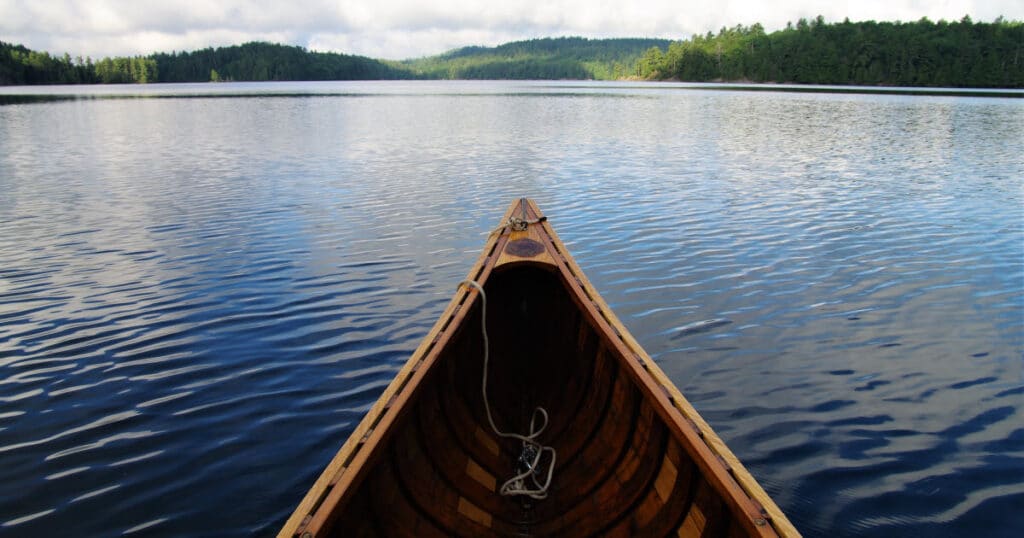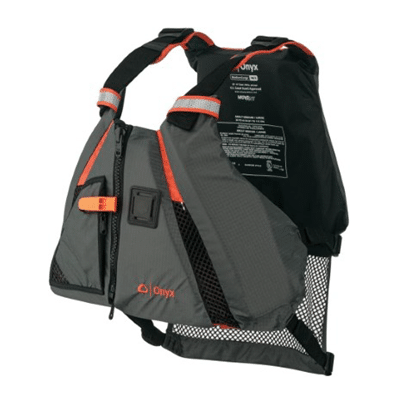Maybe you’ve been thinking about canoeing solo for a long time, but you just haven’t pursued it. To many, canoeing is an activity done in tandem and kayaking is its solo alternative. However, canoeing can be a fun and rewarding solo activity if you have the knowledge, technique, and equipment you need.
In today’s article I’ll share why I love to take solo canoe trips, some tips for canoeing solo in a tandem canoe, choosing the best paddle, and equipment and safety gear you should take with you when boating alone.
Why Canoe Solo?
So, why would someone want to set out on a solo voyage in a canoe?
The following is a list of reasons that experienced solo canoers have created to inspire more adventurists to go it alone on the water.
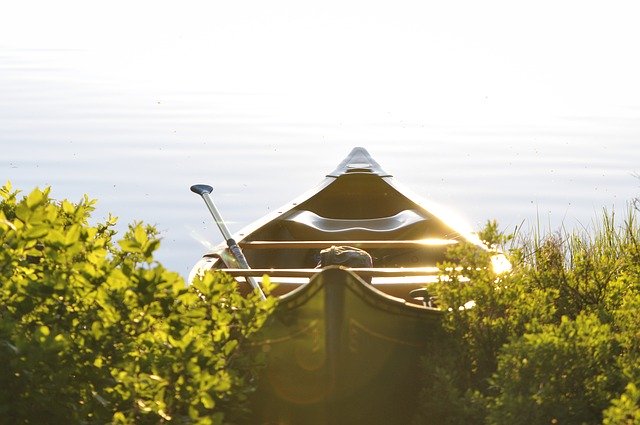
- Solo trips put you in total control of every aspect of the journey. Only you have a say in where you go and when you’ll leave, so coordinating is a non-issue.
- Loading and unloading is much easier with just your gear. Anyone who has ever packed for a trip with the whole family can tell you this.
- While on the trip, you alone create the schedule. If you change your mind about what you originally planned, no one else has to agree.
- Solo canoers often see more wildlife because there is less chatting and it is quieter. Nothing against my wonderful family, but I notice more, and enjoy the trip more when I travel alone by canoe or kayak.
- A solo canoe trip is a good time for relaxing, thinking, and reflecting. You can write, take photographs, and enjoy leaving work, social media, and the stresses of day-to-day life behind.
- Sometimes even the best canoeing buddies have different ways of doing things. When you are by yourself, you always get your own way. There is no pressure to be cordial or risk butting heads.
- If something goes wrong, you only have yourself to blame. These are often the best times to learn better techniques and planning strategies to make future trips better.
Now that we have established why you should take a solo canoe trip, let’s take a look at the right equipment for different adventures. I’ll also talk technique and share some tips I’ve learned from canoeing by myself.
Canoes for Solo Trips
Solo canoeing, more so than tandem excursions, really benefits from a lightweight and easy-to-carry canoe. In my experience you don’t need to buy a canoe that’s designed for solo travel, but it can make navigating and paddling easier if you have the means to do so.
If you’re going to use a tandem, two-seated canoe, then I recommend picking one made of lightweight materials. Kevlar is a good choice.
I also recommend sitting in the front seat of the canoe, facing in the opposite direction.
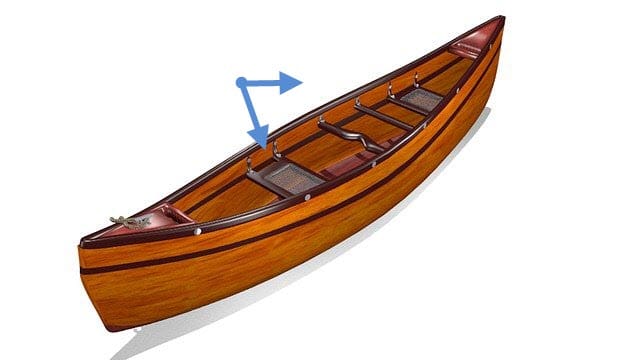
This places your weight closer to the center of the boat and will make it easier to paddle and control your boat. Place your gear and equipment in front of you, just your side of the rear seat to help balance the weight of your canoe. This also keeps your gear accessible.
Details below give an overview of two canoes for solo adventures that I like and recommend. Both happen to be made by Old Town.
Discovery 119 Solo Sportsman
Outdoor adventurists favor this canoe for many reasons, but its lightweight hybrid design is at the top of the list.
This canoe caters to the solo adventurist by weighing only 56 pounds and having convenient built-in carrying handles.
Made by Old Town, the Discovery 119 Solo Sportsman is considered a hybrid since it has the utility of a canoe and the agility of a kayak. This canoe even lends itself to be used with either a single-bladed or double-bladed paddle.
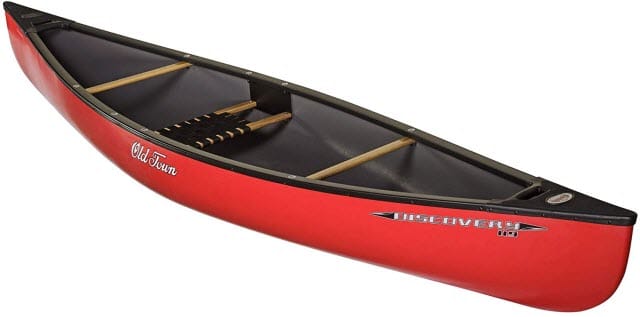
The Discovery 119 Solo Sportsman has a 3-layer hull construction with a lifetime warranty. The 3-layer design is stable, easy to control, and has a smooth ride. This canoe is also a favorite for its many conveniences. The Discovery 119 Solo Sportsman has a cup holder, shotgun ammo holder, tackle rod storage, and an accessory rack.
The Discovery 119 Solo Sportsman gets a thumbs-up on comfort too. It’s contoured and adjustable kayak-style seat and adjustable foot braces make changing positions quick and comfortable. Padded armrests are a nice feature as well, especially on longer trips.
Finally, the Discovery 119 Solo Sportsman has a spacious hull to hold all of your gear, leaving ample room for stretching your legs, and the seat is positioned perfectly for solo paddling canoe trips.
This canoe is 11″9″ long, 32.5″ wide, and 12.5″ deep. It has a weight capacity of 354 pounds. This is probably my favorite option for solo canoeing, and if you can’t find it locally you can order it on Amazon for around $1,000.
Next 13
The Next 13 is also a hybrid canoe manufactured by Old Town. Resembling the Discovery 119 Solo Sportsman, the Next 13 has a 3-layer polyethylene hull which is durable and provides a stable, smooth, and easy-to-control ride. This model, however, has more pronounced tumblehome sides and a lower profile for easy paddling.
This canoe has a removable seat and a support-track foot brace system.
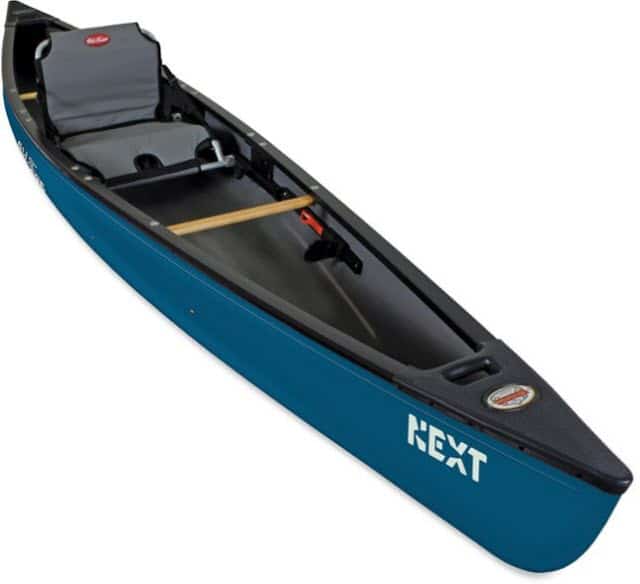
Its specs differ from the Discovery 119 Solo Sportsman at 13′ in length, 29″ wide, and 11.5″ deep, making the Next 13 longer and thinner. The Next 13 also has a flat bottom, whereas the Discovery 119 has a shallow arch bottom.
Both solo canoes are top-rated by experienced paddlers. The Next 13 can hold up to 450 pounds and costs just over $1000.
Full disclosure: I haven’t personally used the Next 13, and when I wrote this article, I haven’t been able to find it for sale online, so it may be discontinued. Your best bet may be to try to buy one locally … used if you can find one.
Paddles for Canoeing Solo
Choosing the right paddle for a solo canoe trip may be more important than choosing the right canoe. The paddle needs to be specific for the person and the activity, otherwise you’ll waste effort and tire faster.
For instance, you should choose your canoe paddle based on your height and seat position.
When canoeing with another person … if you sit in the bow, you want a paddle that measures from the floor to mid-chest when you are standing. However, if you sit in the stern, you will need more length. In this position, your paddle should reach from the floor to your collarbone.
For solo canoeing I recommend a longer paddle than you might traditionally use – one that comes to your collarbone.
Single or Double Paddle?
Now, you must consider whether you need a double or single paddle. Traditionalists will assume that a single bladed canoe paddle will be best, but that isn’t always true.
A double-bladed paddle like paddles traditionally used for kayaking will generally make your solo canoe trip less physically demanding because there is no pressure on your body when performing steering stokes.
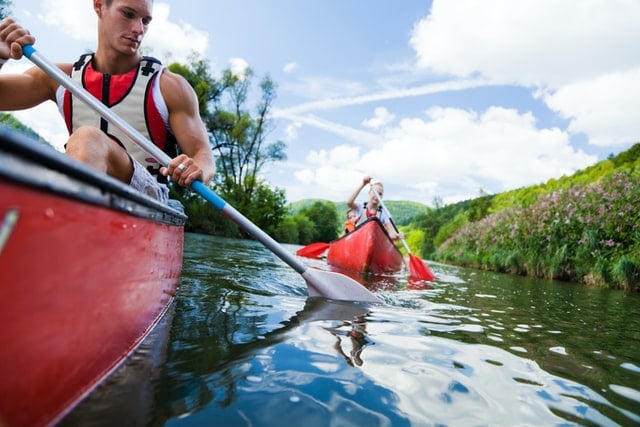
That said, most solo canoeists who prefer a double-bladed paddle also keep a single-bladed paddle in the canoe for tricky steering situations. This is what I recommend as well.
Reasons a Double Paddle Might Not Work
Although a double-bladed paddle will paddling your canoe easier on your muscles, you will have to endure much more water dripping because of the constant back and forth motion of the paddle. Water drips can be quite uncomfortable in the colder months.
In these times, waterproof pants and gloves are a must for comfort, or you could invest in some drip rings like these ones on Amazon to stop the water before it gets to you.
Can I Use a Kayak Paddle for Canoeing?
If you have a kayak paddle already, you might be thinking you can just use your double-bladed kayak paddle when canoeing solo.
I don’t recommend this.
Double-bladed canoe paddles look a lot like kayak paddles; however, a kayak paddle will often not be long enough for comfortable solo canoeing. Canoes sit higher in the water than kayaks; therefore, longer paddles are necessary to reach the water comfortably … which is the whole point of using a double bladed paddle in your canoe.
Paddle Shapes
Paddle shapes and materials must also be matched for your purpose or adventure when canoeing by yourself.
The three main types of paddles you could use are:
- Beavertail paddles are shorter and wider. These are more appropriate for flatwater trips sitting in the bow of the canoe.
- Ottertail paddles have a longer, more narrow blade used for river and lake canoeing while seated in the stern.
- Square-tipped paddles are big and wide, capable of moving a lot of water. This type of paddle is necessary for white water canoeing.
I prefer an ottertail paddle when canoeing by myself.
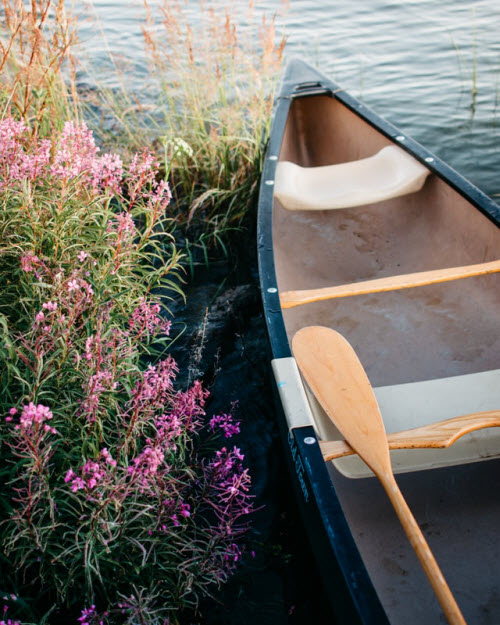
Paddle Materials
Most people think of a canoe paddle as being made of wood (and many are). However, synthetic paddles are popular with some people because they are incredibly durable, and may be lighter weight.
Most people like the look and feel of more traditional wooden paddles (I’m one of them), but some avid white water paddlers opt for the strength that synthetic paddles provide.
Recommended Equipment for Canoeing Solo
Whether your solo voyage is for a few hours or several days, the right equipment can make your solo canoe trip more comfortable (and more safe).
The following is a list of items I recommend that you consider for your safety, organization, and comfort on a short day trip.
Overnight trips will require additional items and camping gear.
- Life jacket (mandatory)
- Map and compass
- Insect repellent
- Sunscreen
- Lip balm
- Sunglasses with a float-strap
- Kneeling pad
- Waterproof bag to hold essentials
- Hat for sun protection
- Signal device
- Flashlight
- Floating throw rope
- Additional rope for towing
- Drinking water
- Food / snacks
Where to Sit When Canoeing By Yourself
Solo canoe trips require slightly different positioning than tandem trips, and your paddling technique will be different as well.
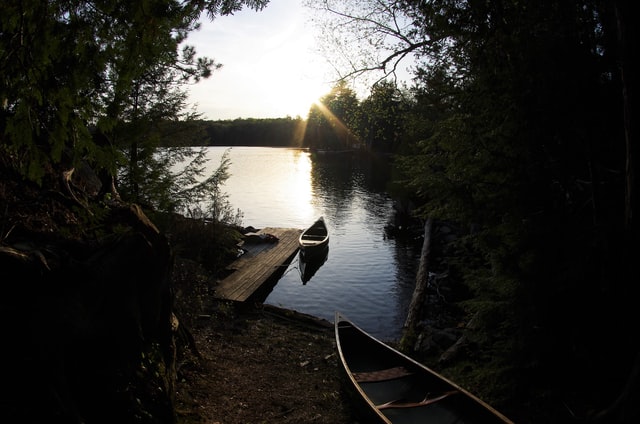
On a tandem canoe trip, one person sits in the stern (back) and controls the canoe’s direction, paddling occasionally. The person in the bow (front) controls the canoe’s speed and supplies the power.
However, on a solo trip, you need to decide if you will sit, kneel, heel, or use a combination of positions.
I’ll discuss each of them here:
Sitting
On a solo trip, one of your choices is to sit backward on the front seat of the canoe as I discussed earlier. You’ll paddle the canoe in reverse, which doesn’t make much of a difference for most canoes.
This position might seem awkward, but it prevents the nose of the canoe from sticking up, keeping your weight as close to the center of the canoe as possible.
Sitting is the most comfortable position for long trips on calm water, where steering your canoe is not a big issue.
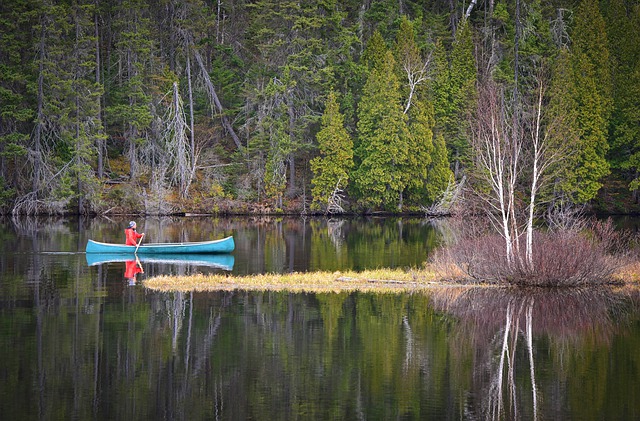
When paddling solo in rough water, you may want to try something else.
Kneeling
Many solo canoeists prefer to kneel. The kneeling position lowers your center of gravity in the craft, and keeps your body in a more upright position. This extra height creates more powerful strokes with added control.
Kneeling is also the preferred position when canoeing alone in strong wind. It will put extra power behind your strokes.
When kneeling, you will undoubtedly need padding on the canoe floor. You should also consider rolling up a towel and placing it between your calves and your backside to take the pressure off your knee joints.
While the kneeling position has its place in solo canoeing, it is a difficult position to maintain long-term, even for those who are very fit. Many canoeists switch their positions regularly for purpose and comfort.
Heeling
Heeling is one last position or technique more experienced solo canoeists use.
In this position, you are kneeling near the center of the canoe with your body off-set to your paddling side. This position makes the canoe tilt more, but your center of gravity is low and stable.
Once you get used to the balance being different, heeling gives your strokes more strength and reach. This position also gives you excellent maneuverability. It’s the most challenging solo position to learn, but once you do, it may become your favorite.
This is a great video which showcases the heeling position in some excerpts from Becky Mason’s Advanced Classic Solo Canoeing film:
Other Things to Consider before Canoeing Solo
Solo canoe trips can be extremely rewarding adventures.
However, solo trips are not recommended for novice paddlers and those inexperienced in camping and traveling in the wilderness.
This doesn’t mean you have to be an expert to go solo in a canoe, but you will need to gather all the information you can in advance, and you may want to pack a little extra safety equipment.
Understanding the style of canoe and paddle you will need and how to position yourself in the boat is a great start, but for your first canoe trips, go with a friend or family member until you get more comfortable. It’s always safer to travel with someone else.
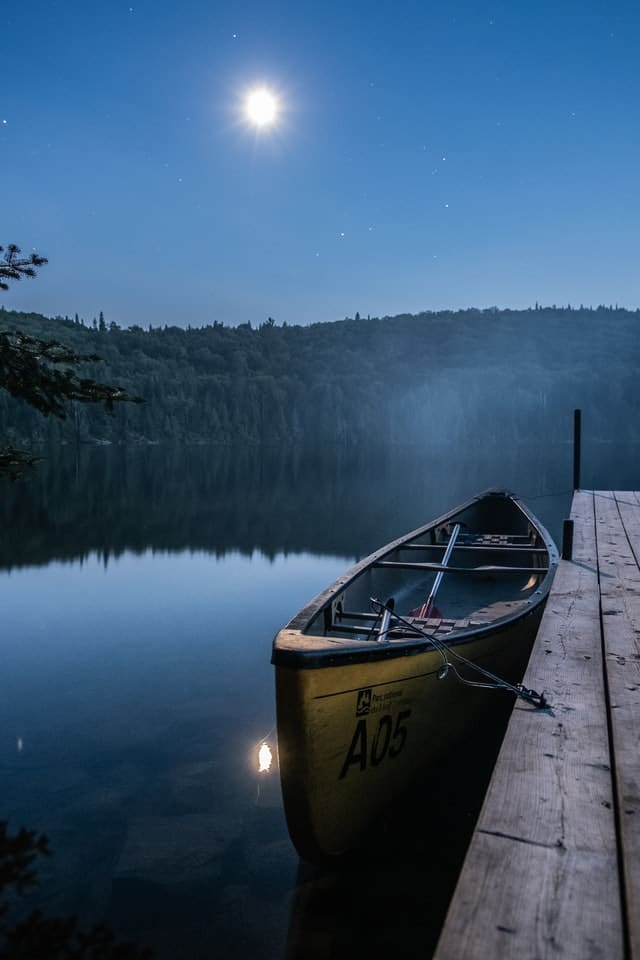
If you are just getting started with canoeing, educate yourself by reading articles like this one, and watching videos for tips from experienced canoers.
Also, you might consider hiring an outfitter who can show you the best equipment for your needs and sell it to you.
When you feel comfortable and equipped, get out on the water and enjoy a solo canoe day trip, and eventually you can graduate to longer adventures in your canoe.

